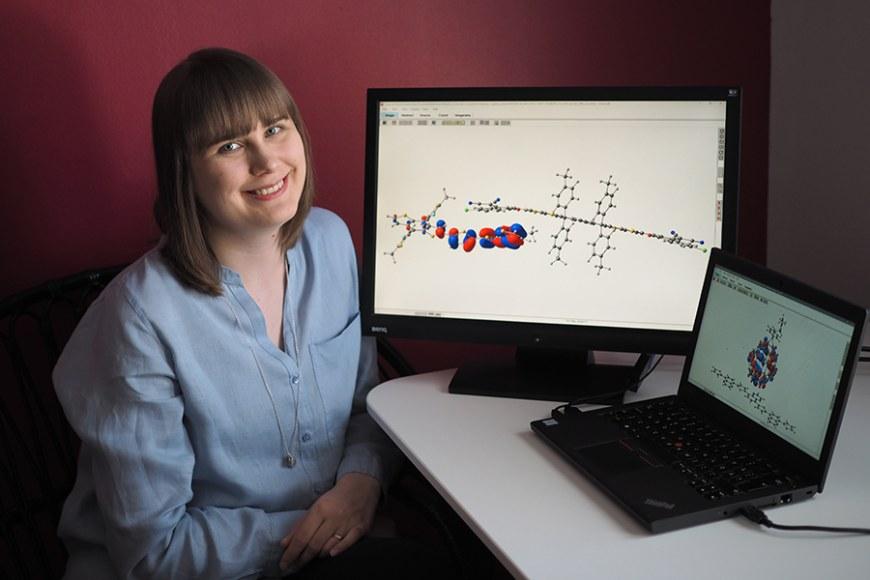
The problems related to the use of fossil fuels and the world’s increasing demand for energy has forced to search for new energy forms. Silicon-based solar cells have become one of the most competitive alternatives for traditional energy generation. Emerging, next-generation organic solar cells provide attracting features that inorganic devices do not possess.
- Advantages of organic solar cells are their thin, light-weight, and flexible structures, which will be beneficial in various integrated applications. Furthermore, low manufacturing cost and easy fabrication make these devices a very interesting option, Kastinen says.
A great amount of experimental and theoretical work has been carried out for gaining more understanding of the factors defining the performance of organic solar cells. Quantum mechanical methods provide an electron-level information on characteristics of molecules such as structures and optical properties.
In her dissertation, Kastinen utilized the computing services provided by CSC – IT Center for Science in computational modeling of polymer solar cell materials. In the calculations, she employed quantum mechanics-based density functional theory, in which the energy and other physical properties of a system can be determined from its electron density.
Density functional theory has become a very popular tool in studies of organic solar cells due to its optimal balance between accuracy and computational efficiency. The challenge in the density functional theory is a so-called exchange–correlation energy, whose exact form is not known and thus approximate functionals are used instead.
- Functionals and theoretical models used in modeling of polymer solar cells should be selected carefully to ensure an accurate description of the studied system. This was one of the main goals of my research work, Kastinen emphasizes.
Kastinen focused on materials employed in a photoactive layer of solar cells, namely polymers, fullerenes, and small organic compounds. In addition to the individual compounds, she explored the effect of functional and other computational methods in the studies of phenomena occurring at the interfaces of these compounds and when calculating their charge transfer rates.
- Determining the properties and relative interactions of compounds helps to gain a better understanding on their performance in solar cells. The results obtained in this work can be exploited further in theoretical studies of similar solar cell materials and in developing new, more efficient materials, Kastinen concludes.
Tuuva Kastinen is from Hämeenlinna and has carried out her research at the Chemistry and Advanced Materials research group at Tampere University.
The doctoral dissertation of M.Sc. (Tech.) Tuuva Kastinen in the field of chemistry titled Molecular Level Understanding of Conjugated Organic Solar Cell Materials - a Computational Study will be publicly examined in the Faculty of Engineering and Natural Sciences at Tampere University starting at 12 o'clock on Friday 4 September. The Opponent will be Professor Fabrizia Negri from the University of Bologna, Italy. The Custos will be Docent Terttu Hukka from the Faculty of Engineering and Natural Sciences of Tampere University.
The event can be followed via remote connection. If the remote connection does not work properly, you may also follow the dissertation defence here (Zoom, meeting ID: 628 9644 3230)
The dissertation is available online at
http://urn.fi/URN:ISBN:978-952-03-1608-2
Photo: Mark Näppi
